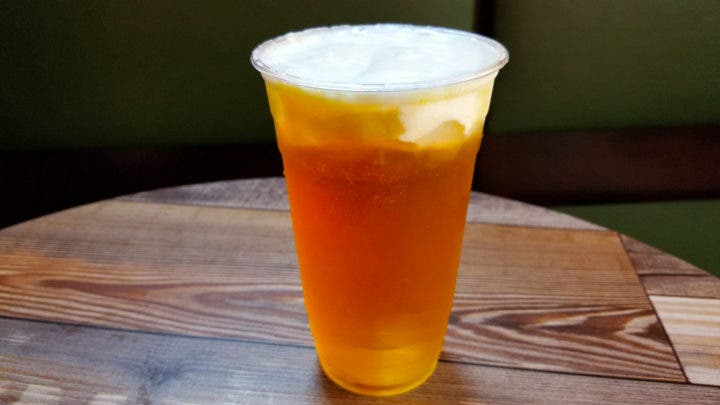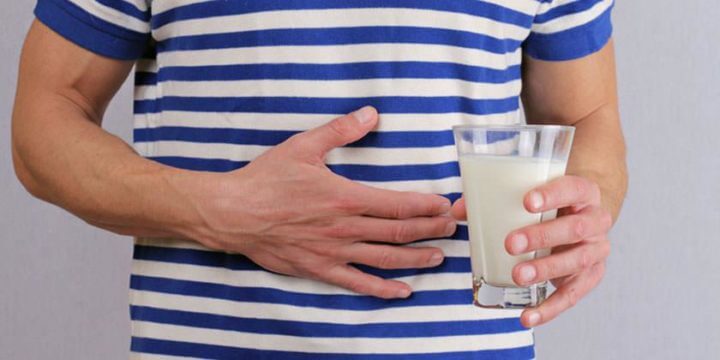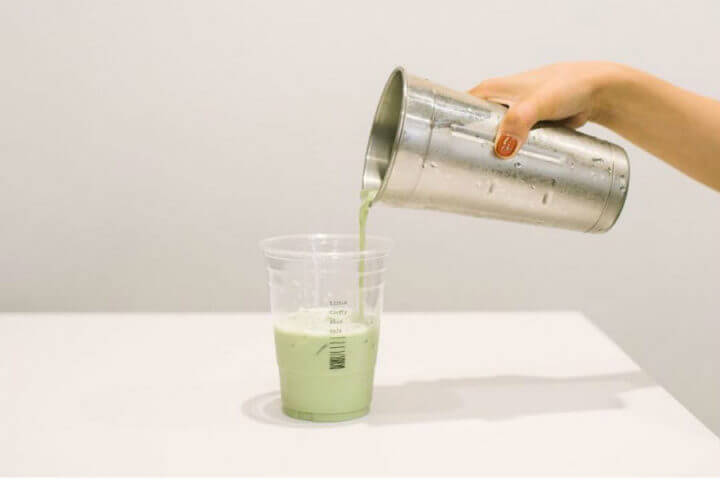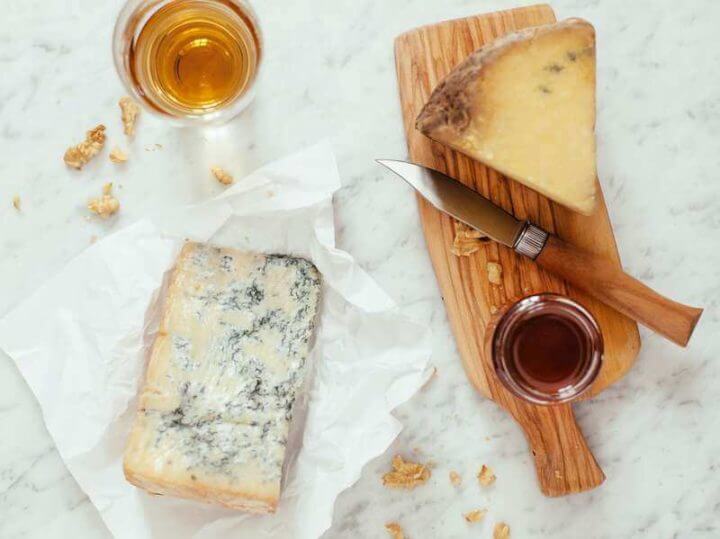Tea is one of the most consumed beverages in the world and cheese in many diets, but the idea of combining both foods does not seem at first sight very pleasant. However, this unthinkable union has led to the tea cheese or cheese tea, a drink that was born in small establishments in Taiwan and has spread across the globe, causing a real furor in social networks and endless queues to buy it in streets of Singapore, China, New York or Los Angeles.
The cheese tea is made with an infusion, which can be any type of tea, topped by a layer of cream cheese, like the one usually added to the preparation of cheesecake, which usually includes condensed milk.
Discover everything you should about this curious tea through this guide, including its health benefits and disadvantages.

What is cheese tea?
The emergence of cheese tea began in Taiwan and mainland China. It is a generally sweetened iced tea that can be made with many varieties of tea, topped with an inch or two thick layer of frothy, mousse-like dairy products.
It’s usually made from cream, cream cheese, and milk, but it can also include heavy cream, condensed milk, and whipped cream, as well as garnishes like chocolate or rock salt. Its consistency is similar to heavy whipped cream, and it is served on top of the preparation of your choice, and can be paired with green, gray, black and matcha teas.
The appearance of these colorful and original drinks can be summarized as follows: a transparent glass of tea of different flavors with a cream cheese topping on top.

Cheese tea benefits
Cheese tea contains tea, a beverage known for its great and distinctive beneficial properties. For example, green tea is packed with antioxidants called catechins, compounds that help reverse damage caused by free radicals, potentially harmful molecules that can cause cell damage when levels are too high in your body (Zeng, Luo, Li, and Liu, 2016).
For example, a 2-week study of 32 people who drank 3 cups (700 ml) of green tea a day found that people who drank it had almost 30% more antioxidant activity in their skin (Megow, Darvin, Meinke and Lademann, 2017).
On the other hand, black tea is rich in antioxidants called black tea polymerized polyphenols (BTPP), which can help reduce blood sugar, high blood pressure, inflammation, and cancer risk (Butacnum, Chongsuwat, and Bumrungpert , 2017).
On the other hand, dairy products are also present in this new way of drinking tea, and although before I thought that consuming these foods brought many health disadvantages, it has been discovered that this may not be true. In fact, whole dairy products like cream cheese have been linked to a reduced risk of obesity and metabolic syndrome, which is a precursor to type 2 diabetes and heart disease (Crichton and Alkerwi, 2014).
However, all those possible benefits that this curious drink can bring can be counteracted by the amount of sugar present in the tea.

Disadvantages of cheese tea
There are some drawbacks to consider before consuming cheese tea. For example, if you are lactose intolerant, like many people around the world, this drink is not ideal for you.
On the other hand, the sugar in cheese tea can be harmful to health. In fact, sugar has been linked to joint inflammation and many negative health outcomes, including an increased risk of type 2 diabetes, obesity, heart disease, and certain types of cancer (DiNicolantonio, Lucan, & O’Keefe, 2016; Della Corte et al., 2018)
Many cheese teas also contain unnecessary additives and can be highly refined. There are stores that when preparing the cheese layer, they do it with a powdered base instead of fresh ingredients. Therefore, if you decide to ingest this tea, it is recommended that you order it from a trusted place or prepare it with homemade ingredients.

Is cheese tea healthy?
Since the top layer is made from a mixture of cream cheese and condensed milk, this drink can provide a source of calcium and protein. However, it can also contain a large amount of saturated fat.
Cheese tea is high in sugar and calories, and certain versions may contain refined additives, such as food coloring. And considering that regular consumption of beverages high in sugar and calories is not good for your health, its consumption might not be the most appropriate.
I mean, it’s probably better to think of cheese tea as an occasional drink, rather than having something on a day-to-day basis. However, what you can drink every day is the tea under the foamy cover. Tea is a source of antioxidants and can provide numerous health benefits, so adding more to your diet can be beneficial.

How to make cheese tea?
Cheese tea is quite simple to prepare and can be enjoyed hot or cold.
Ingredients
- 1 cup fresh whipped cream
- 1 tablespoon cream cheese
- 1 cup of milk
- 1 tablespoon of condensed milk
- 1 tablespoon of sugar and ½ teaspoon of salt
Steps for preparation
- Combine the milk, cream cheese, whipped cream, condensed milk, and a pinch of salt in a large bowl.
- Using a fork or hand blender, mix the contents of the bowl until frothy peaks form.
- Cover the foam with saran wrap or the top of the bowl, and chill for a minimum of two hours.
- Once the cheese topping is nice and fresh, make your tea (either hot or cold) and fill your mug three-quarters full, before adding a few tablespoons of cheese foam on top.
Making cheese tea at home will allow you to control the calorie and sugar content, as well as the quality of the ingredients.

References
- Butacnum, A., Chongsuwat, R. and Bumrungpert, A. (2017). Black tea consumption improves postprandial glycemic control in normal and pre-diabetic subjects: a randomized, double-blind, placebo-controlled crossover study. Asia Pacific Journal of Clinical Nutrition. doi: 10.6133 / apjcn.112015.08
- Crichton, G. and Alkerwi, A. (2014). Whole-fat dairy food intake is inversely associated with obesity prevalence: findings from the Observation of Cardiovascular Risk Factors in Luxembourg study. Nutrition Research . Doi: 10.1016 / j.nutres.2014.07.014
- Della Corte, K., Perrar, I., Penczynski, K., Schwingshackl, L., Herder, C. and Buyken, A. (2018). Effect of Dietary Sugar Intake on Biomarkers of Subclinical Inflammation: A Systematic Review and Meta-Analysis of Intervention Studies. Nutrients . doi: 10.3390 / nu10050606
- DiNicolantonio, J., Lucan, S. and O’Keefe, J. (2016). The Evidence for Saturated Fat and for Sugar Related to Coronary Heart Disease. Progress in Cardiovascular Diseases . DOI: 0.1016 / j.pcad.2015.11.006
- Megow, I., Darvin, M., Meinke, M. and Lademann, J. (2017). A Randomized Controlled Trial of Green Tea Beverages on the in vivo Radical Scavenging Activity in Human Skin. Skin Pharmacology and Physiology. doi: 10.1159 / 000477355
- Zeng, L., Luo, L., Li, H. and Liu, R. (2016). Phytochemical profiles and antioxidant activity of 27 cultivars of tea. International Journal of Food Sciences and Nutrition . Doi: 10.1080 / 09637486.2016.1263834
